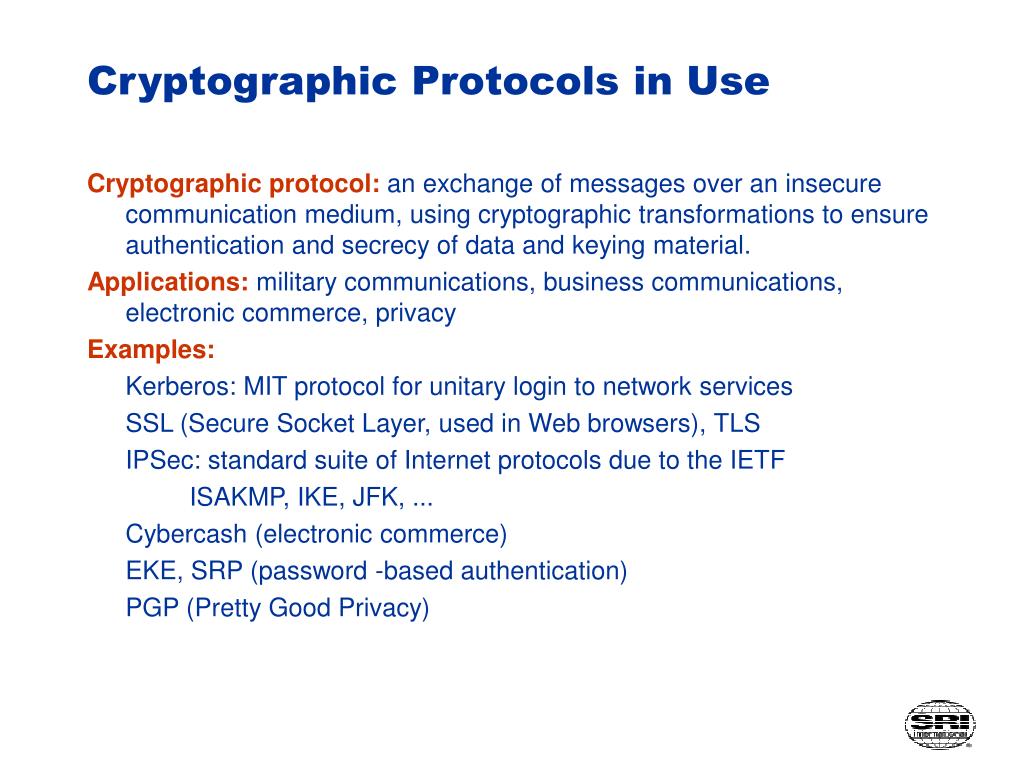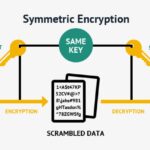In an increasingly interconnected world where data breeches are almost as common as morning coffee, the necessity for robust security mechanisms has never been more paramount. One pervasive question lingers: what happens when the encryption safeguards become inadequate? As we delve into the perplexing realm of cryptographic protocols, the array of methods designed to secure communication and protect data integrity reveals both sophistication and vulnerability. Understanding these protocols is essential for both technology aficionados and everyday users who wish to protect their information. Here, we explore several common cryptographic protocols that are integral to securing our digital lives.
The landscape of cryptographic protocols is as diverse as the challenges it aims to address. Among the noteworthy mentions, SSL/TLS stands out prominently. Secure Sockets Layer (SSL), succeeded by Transport Layer Security (TLS), serves as a cornerstone for secure internet communication. It encrypts data transmitted between a user’s computer and a web server, ensuring that sensitive information, such as credit card details and personal credentials, remains under wraps as it traverses the vast networks of the internet. This protocol utilizes a combination of asymmetric and symmetric cryptography, whereby an initial exchange of keys occurs using asymmetric encryption, later transitioning to symmetric encryption for subsequent data transmission. As we connect to our favorite shopping platform, have we considered whether our data is truly shielded from prying eyes?
Reflecting on our daily interactions, we encounter the Internet Protocol Security (IPsec). This potent framework operates at the network layer and is pivotal in securing Internet Protocol communications by authenticating and encrypting each IP packet within a communication session. IPsec provides a robust defense against various types of attacks while facilitating secure communication between two endpoints, commonly in Virtual Private Networks (VPNs). As remote work flourishes, the prevalence of IPsec becomes ever more relevant. How can we ensure that our data traveling over unsecured networks remains uncompromised?
Yet another pivotal cryptographic protocol that merits discussion is Pretty Good Privacy (PGP), primarily utilized for securing emails. PGP employs a mix of symmetric and asymmetric encryption techniques to provide confidentiality, authenticity, and non-repudiation. Each user possesses a unique key pair: a public key for encrypting messages intended for others and a private key for decrypting received messages. The advent of PGP not only marked a significant enhancement in personal privacy but also introduced the concept of web of trust, wherein users verify each other’s keys within a decentralized framework. The challenge emerges: can we maintain this web of trust in an era fraught with misinformation and compromised identities?
As we delve deeper, we encounter the Secure/Multipurpose Internet Mail Extensions (S/MIME) protocol. Like PGP, S/MIME is utilized for securing email communications. However, unlike PGP, S/MIME employs a centralized authority model for key management. The protocol uses digital certificates issued by certificate authorities (CAs) to facilitate encryption and digital signatures, ensuring the integrity and authenticity of email messages. Nevertheless, S/MIME also places reliance on external entities for trust, leading to inevitable risks should these authorities falter. Is it wise to entrust our sensitive communications to third-party authorities?
Moving to the realm of secure communication applications, the Signal Protocol, which underpins applications like Signal and WhatsApp, utilizes modern cryptographic techniques to achieve end-to-end encryption. This means that only the communicating users can read the messages, while service providers, including the platform operators, remain oblivious to the content. The Signal Protocol employs a combination of double ratchet algorithm, prekeys, and asynchronous messaging, all designed to fortify security against interception and eavesdropping. However, as encryption becomes more robust, do we risk creating a digital haven for malicious actors?
In recent years, the advent of blockchain technology has introduced a novel approach to cryptography with the implementation of cryptographic protocols like proof of work and proof of stake. These are essential for validating transactions and securing decentralized networks like Bitcoin and Ethereum. Such protocols contribute to the immutability and transparency of blockchain records while utilizing cryptographic hash functions to ensure data integrity. Nevertheless, the underlying environmental concerns associated with proof of work raise an important question: can we create a sustainable cryptographic framework that balances innovation with ecological responsibility?
As we traverse through the cryptographic ecosystem, it becomes evident that each protocol serves a specific purpose, catering to distinct needs without creating an impenetrable fortress against all forms of digital threats. The delicate balance between enhanced security measures and increased complexity poses both opportunities and challenges. With cyber threats evolving at a staggering pace, understanding the cryptographic protocols in place can empower individuals and organizations alike to make informed decisions regarding their digital interactions.
To conclude, our digital age is replete with a myriad of cryptographic protocols, each playing a crucial role in safeguarding our sensitive information from malicious intrusions. From SSL/TLS that blankets our online transactions to the intricate webs of trust woven by PGP, these protocols are indispensable in our pursuit of digital security. Yet, as with any security system, they are not impervious. The perpetual question remains: how do we adapt to a new generation of threats while ensuring the sanctity of our communications? In grappling with this reality, one must acknowledge both the strengths and weaknesses of the cryptographic systems that underpin our digital lives.








Leave a Comment